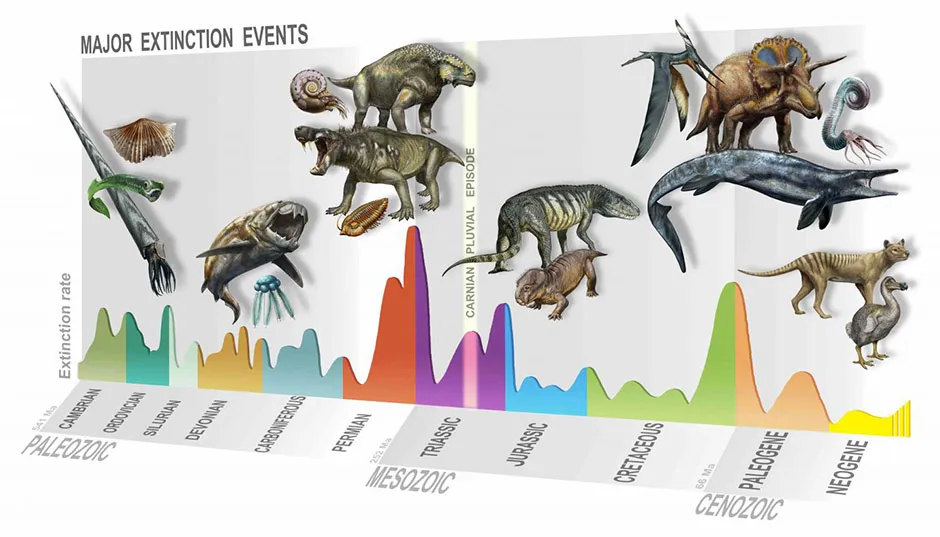Dinosaurs had to contend with more than one mass extinction in their time – but unlike the asteroid, one of them actually gave the dinosaurs a helping hand. The Carnian Pluvial Episode (CPE), newly discovered by an international team of scientists, took place 233 million years ago and cleared a path for the dinosaurs to thrive.
Massive volcano eruptions in western Canada most likely caused this extinction event, as lava rained down and formed a thick layer of basalt over the west coast of North America. “The eruptions were so huge, they pumped vast amounts of greenhouse gases like carbon dioxide, and there were spikes of global warming,” said Professor Jacopo Dal Corso of the China University of Geosciences.
This climate change brought about increased rainfall, leading to a humid period that lasted for 1 million years. The rainy period – but not the mass extinction – was originally discovered by geologists Mike Simms and Alastair Ruffell in the 1980s, who gave it its name.
The end of the CPE was marked by the return of arid conditions.
Read more about mass extinction:
Though it was small, as mass extinctions go, it had a huge impact on life on Earth. Plant life, in particular conifers, thrived thanks to the shifts in climate, forming ecosystems more like those that exist today. "The new floras probably provided slim pickings for the surviving herbivorous reptiles," said Professor Mike Benton, a palaeontologist at the University of Bristol.
He added: “We now know that dinosaurs originated some 20 million years before this event, but they remained quite rare and unimportant until the Carnian Pluvial Episode hit. It was the sudden arid conditions after the humid episode that gave dinosaurs their chance."

It wasn’t just the dinosaurs that did well out of the CPE. “This extinction is relatively rapidly followed by a huge diversification event among many important marine and terrestrial groups,” said Prof Dal Corso, “marking the origins of modern ecosystems as, for example, the flourishing of coral reefs.”
“In some respect it looks like a typical extinction event,” he said. “What is interesting is the “explosion” observed among many groups and the transition towards modern-style ecosystems. A lot is still unknown about the Carnian Pluvial Episode, and future research will hopefully reveal more details about the extinction and the following radiation.”
Reader Q&A: Why were birds the only dinosaurs to survive the mass extinction?
Asked by: Edward Seymour, Hove
The asteroid that caused the extinction event at the end of the Cretaceous period struck Earth with 60,000 times the energy of the world’s entire nuclear arsenal. The atmosphere would have glowed red hot for several hours and all the large dinosaurs that couldn’t burrow underground or hide underwater were immediately roasted.
When the smaller species came out of hiding they found a charred landscape and the air so thick with soot and sulphur dioxide clouds that sunlight was almost completely blocked out for the next year. It was too dark for photosynthesis, so the herbivores died, then the carnivores.
Birds are descended from the maniraptoran dinosaurs but they had two important adaptations that helped them survive. First, they had beaks instead of teeth, which allowed them to crack open seeds and nuts buried in the topsoil.
Second, their relatively large skull capacity suggests that they were more intelligent than the other reptiles. They may have lived in more complex social groups that could cooperate and adapt to find new food sources in the radically different post-apocalyptic landscape. This allowed them to eventually outcompete any other species of small dinosaur that might have survived the initial impact.
Read more: